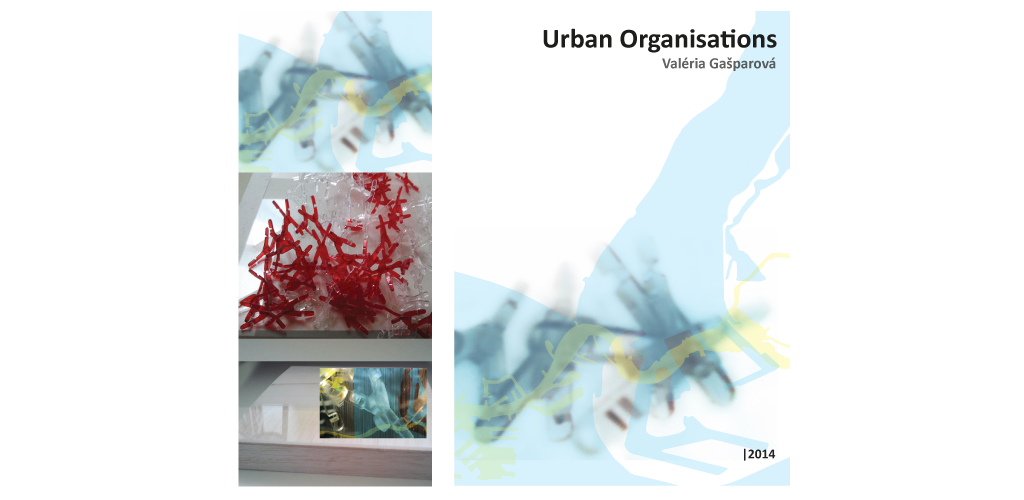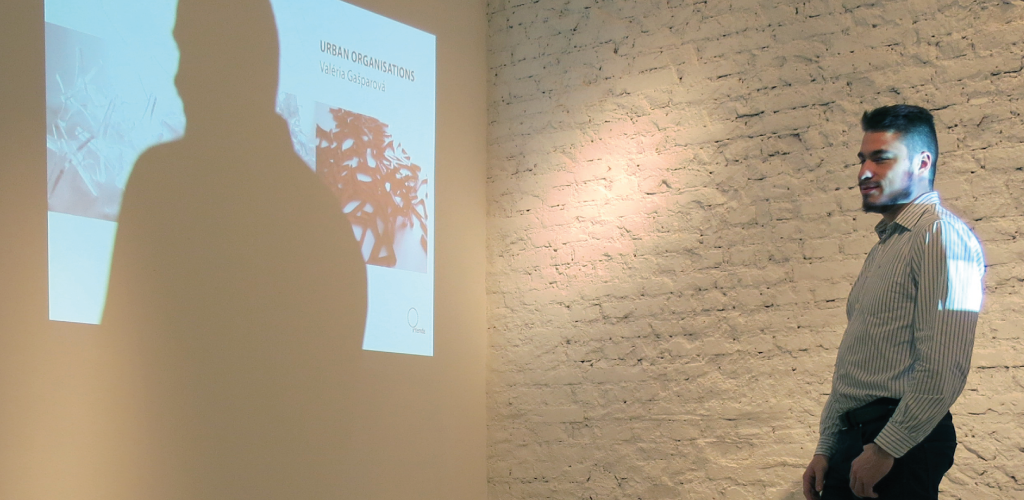Valéria Gašparová home page
Urban Organisations
C.A.I.S. architects, Havanská 1087/3a, 170 00 Prague
Project presentation: 16.1.2015 | 18: 00 CET
Contemporary cities are increasingly characterized by urban fragmentation, resulting in proliferation of isolated locations.The multitude of dynamic urban environment factors calls for the need of developing new urbanization procedures. Identification of inconsonant features of a place, finding the ways of mapping them, thinking about potential programs and possibilities of changing the value of place are very important.
The project is conceived as an interconnection between art, new technologies and urban research. The aim of the project is an artistic installation, which includes an experimental digitally fabricated 3-D model and a collection of digital prints conceived as urban notations. The metabolism of the city, emergent structures and new forms of organisations are essentially reflected as a topics. Digital prints in different time-space scales serve as initial studies of organisational principles. Selected data is then transferred onto plexiglass using the technique of engraving and layering printed transparent plexiglass on each other.
The urban notations differentiate these four functions: built-up areas, free spaces, natural surfaces and infrastructure. Various graphical notations represent wide relationships between these selected functions, their mutual interactions and the new potentially emerging forms of the urban organisations. The second part of the project is oriented on transformation of mainly two-dimensional notations to the 3D physical digitally fabricated model using CNC technologies. The proposed model consists of layered plexiglass sheets, which represent the most relevant urban data on their surfaces. A complex structure of digitally fabricated, geometrically and functionally diversed 3D components is assembled on the basis of functional differentiation and installed on the top of plexiglass sheets.
There are many ways to deal with questions how the 3D components could be assembled or organised. The process of putting together the parts focuses on finding innovative connections of prototyped urban aggregation. The visitors of the artistic installation are also included to the process of thinking and testing more accurate solutions of contemporary urban organisations. The model serves as a “ tool “ through which the individual guests or groups can test the model ( and moreover to speculate about such urban processes as: re-organisation, urban dynamics, emergency … They can thus understand better the problem of current city organisation development.
Supported by Intenda.
“The value of a model is that it can be used to improve our understanding of the ways in which a system behaves in circumstances where it is not possible to construct or experiment with a real world situation.”
Colin Lee




